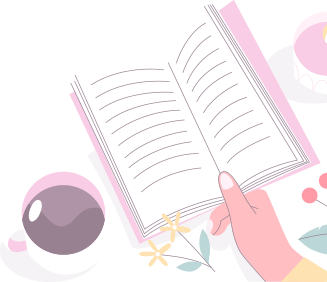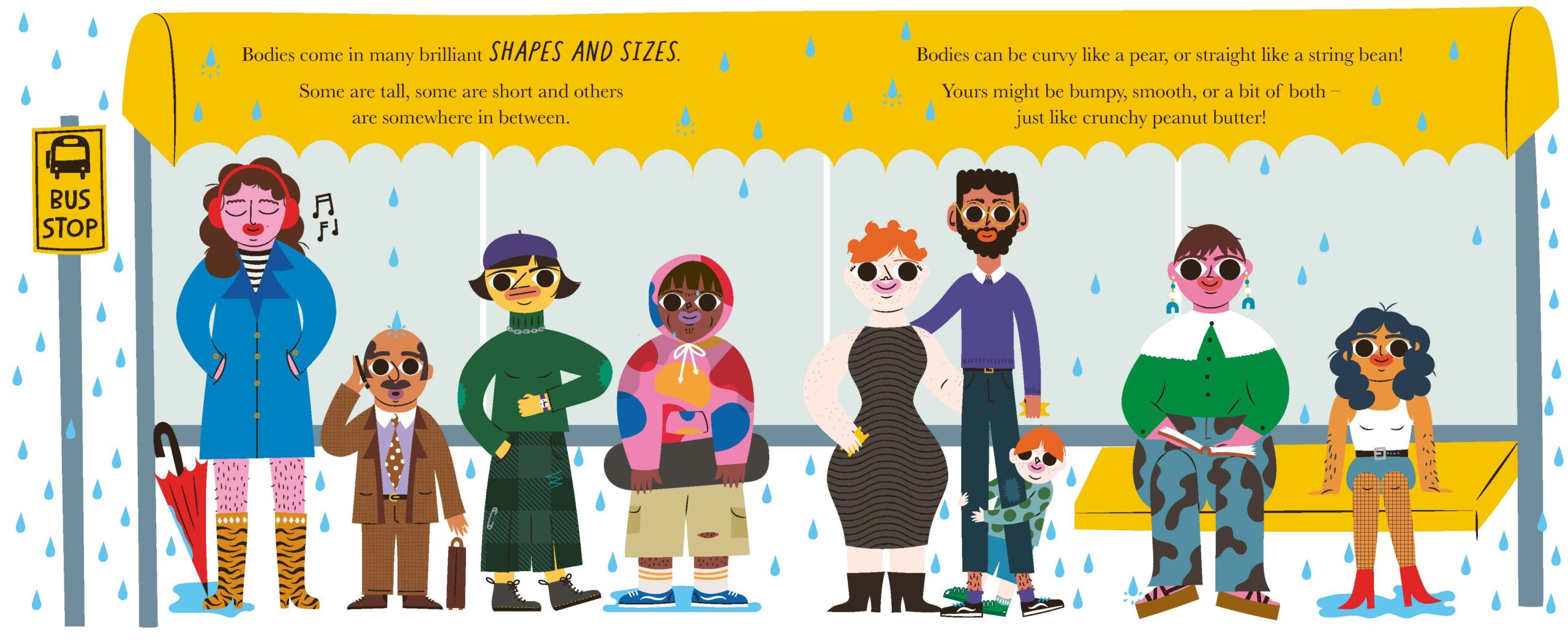


“Mama…um…how are babies made?”
This is the first question from O, my 5-year-old, as we drive home from school and kinder.
Over her head, my older two children (T and B) exchange a knowing smirk.
In this moment, I know my response to the big question matters a lot.
I’d read that it’s important to not be embarrassed, not avoidant, and not too enthusiastic either, so that she gets the message: any question you ask me is okay.
I knew to keep my voice steady and my smile neutral.
Plus, as a mother of three, I had heard this question at least twice before.
Yes, I think, I’ve got this.
“That’s a great question,” I say encouragingly. “When we get home we can talk about it, okay? I have a book with really good pictures in it, too.”
T and B nod sagely. They know the book well.
The big question
I first heard about The Amazing True Story of How Babies are Made years ago listening to Fiona Katauskas, the book’s creator on the radio.
It is a wonderfully illustrated and perfectly simple exploration of the multiple ways babies are made in the modern age.
At home, we settle on the couch with a slightly worn copy of The Amazing True Story and a plate full of afternoon snacks. The T and B are in their rooms, out of earshot.
As delightfully predicted, O giggles at the pictures of naked bodies. She points out the man and woman with rainbow-coloured hair, all the way down to their rainbow-coloured public hair.
She informs me that the children on the next page belong to these adults because they also have rainbow hair on their baby heads.
So far, she has grasped the basics of genetics.
A few pages later we find a helpful picture depicting what happens with the genitals during intercourse. A very important part of understanding how babies are made.
When the book was first published, some parents have found this picture confronting. It’s fair enough, as so many cultures have framed sex as shameful and have avoided the topic with children.
However, in her radio interview, Fiona Katauskas had explained how some people got so upset about this they attempted to create a media frenzy and tried to get the book banned. The level of aggression surprised a lot of people – including Fiona.
But my children have never seemed embarrassed at all. They are young enough to keep the door wide open while they shower. They spend hours in front of the mirror making faces or playing air guitar in the nude. Bodies are fascinating to them and, in our home, they are also totally normal to see.
So I keep my lingering sense of awkwardness to myself.
The book goes on, having explained the basics of biological baby-making, to describe other ways of making magic happen – including IVF, surrogacy and adoption.
O says now she understands how her school-friend was made from two dads.
I smile seeing that all kinds of families are welcome in these pages. Just like all colours of hair.
I put the book down and pass O a biscuit.
“Babies can be made in lots of ways, can’t they?” I say.
I sit back and silently congratulate myself on answering her questions in an age-appropriate, factual and light-hearted tone. For a nice fleeting moment, I feel like a supermama.
So it is that I am a supermama with my guard down when her next question comes.
The other big question
“Mama…um…do I have a baby inside me?”
I cough a little. I thump my chest, muttering about a crumb stuck in my throat.
There are tears in my eyes, but nothing actually stuck in my throat.
Where, I think with dread, is this conversation going?
“What do you mean darling?” I ask, putting my arm around her shoulders. She instinctively leans into me.
I wait for her to look up at me but she doesn’t. I am holding my breath. I hope she doesn’t sense the tension building in my chest.
“Well,” she says, with a shyness I rarely see in her, “my friends at school said I have a fat belly.”
She looks down at her perfect 5-year-old body thoughtfully, “And I noticed my tummy is a bit fat, so I thought maybe I have a baby in there.”
“But I didn’t do any of those things in the book,” she points to it and shakes her head. “So now I am confused.”
I stare at her, trying to take this all in.
From ‘the sex talk’ to fat-shaming, all before dinnertime. This is parenting.
In the long moment I am stuck inside my head, my older daughter T pipes in. She has overheard the last few moments.
“Of course it’s not a baby,” T scoffs. “You just have a bigger tummy than the other girls.”
Then she furrows her brow a bit. She grimaces, realising that didn’t come out right. She looks at me helplessly.
“Well I wouldn’t say it’s a big tummy,” I say in a careful, light, non-blaming tone.
I make a quick decision.
“I love my own belly,” I say. I lift my shirt to reveal my slightly wobbly, post-babies, no-time-to-exercise-tummy spilling over the top of my leggings.
I am not obese or overweight at all, nor am I perfectly fit or toned.
I wouldn’t say I am at ease with how my body has changed in the last ten years. But it doesn’t keep me awake at night. I am healthy and fit enough to have an active life, and the way my body looks from the outside comes a distant second to that.
Doesn’t it?
I kiss my hand with a loud “mwah!” and place the kiss on the skin of my belly (the one I sometimes privately curse).
I grin proudly at my daughters. Their eyes meet coyly. No laughs at all.
Say it with me now…
“Mama,” says O slowly, “I’m not trying to be mean, but we think you’re…a bit fat.” She looks at me a bit apologetic, a bit defiant. She glances back at T who is staring at the floor.
For the briefest moment, I am thrown.
In a heartbeat I reply, “But that’s okay, what’s wrong with being a bit fat?”
I know my voice is too shrill. I can’t help it. I have not called myself ‘fat’ out loud until this very moment.
But I have to stand my ground. Even if I suggest other words – ‘a little flabby’, ‘round’ – it would feel like backing down.
Also: what’s actually wrong with being a bit fat? (Or even more than a bit?).
With considerable inner strain I announce, “I am okay with being a bit fat.”
My older daughter T is still grimacing. “Well, I’m not okay with it,” she murmurs.
I glance at her, surprised. She shrugs and walks away to her room.
The younger one O lifts her t-shirt and gazes at her beautifully round belly. She looks back at me uncertainly.
I kiss my hand again with another “mwah”. This time I place the kiss on her belly.
“Everyone single body is a bit different, isn’t it?” I say.
Hello Every Body
For the second time today, I reach for a book to guide me.
“Want to have a look at some lovely bellies with me?” O nods, a bit solemn, and crawls back into my lap.
Hello Every Body, created by Samantha Curcio, is not about babies or ‘private parts’. It’s about all our body parts and how those parts make us whole.
The tension in my chest unfurls as we explore the many sizes of ears and noses, the tall and short people and the in-between, the freckles and pimples and hairs in the pages.
The book’s tone is one of joy and awe – it’s as if we are discovering each of these diverse bodies as you might discover a new country.
Wow, that person walks with a metal leg! Hey, that boy is doing a magnificent cartwheel even though he has glasses! Oh look, that girl is climbing a tree with her big strong legs.
O is grinning, her face relaxed. I place my hand on her belly and kiss the top of her head. “How do you feel now?” I ask.
“Good,” she replies, standing up to stretch. “Can I go get more crackers?”
“Of course,” I say, relieved to see her confidence returned. “Want to have a dance party after that?”
She nods eagerly. “I’ll go get my dance clothes on.”
Perfection comes in many forms
I poke my head into my older daughter T’s room.
“We really liked this book about bodies,” I say, holding Hello Every Body out for her to see, “I think it helped your sister understand she is perfect just as she is.”
T looks up briefly from her tween novel. But doesn’t meet my eyes.
After a beat she whispers, “I didn’t mean to say there is anything wrong with you…or her.” She looks up. “I’m sorry.”
I wrap my arms around her. “It’s okay, I know you didn’t mean it.”
I choose my words slowly. I try to step carefully through the landmines of pre-teen feelings and opinions.
“It’s hard for all of us living in a society that says bodies should look a certain way. That’s not your fault.” I squeeze her shoulder. “We just have to keep remembering that we are all perfect in our own way. Including you.”
She leans into me. I hear her exhale deeply. Suddenly she pulls away and looks directly at me.
“I think I have read about this kind of thing.”
She points to The Confidence Code on her bedside table. The book, authored by Katty Kay, Claire Shipman and Jillellyn Riley, was a Christmas gift to her a couple of years ago.
I keep my voice as neutral as in the car earlier, hoping she will reveal more. “What do you mean?”
She flips through the pages. “Well, it kind of says we might accidentally repeat the messages about our bodies being perfect, because the messages are all around us.”
Bingo.
She continues, “And it says if we say more positive things to ourselves and each other about our bodies, then those messages won’t be as hurtful.”
I don’t have anything to add to that. I nod and stand up.
“Want to join the dance party?” I ask, holding out my hand.
She smiles. “I’ll go get the disco light. Hey you look amazing!”
O has re-appeared in full disco get-up. Shimmering tights, rainbow skirt. Sequined crop-top, bare belly. Sunglasses and a purple cap.
My son B joins us, dressed in his favourite danceware: pyjamas. “I’ll do the music,” B says.
T turns on the swirling disco light.
I give her a conspirational wink before I flick off the overhead light, and I see her beaming back at me.
Music and light fill the room.
Then we all dance like no one is watching.
Copyright ©2024 Make Family Magic. All Rights Reserved